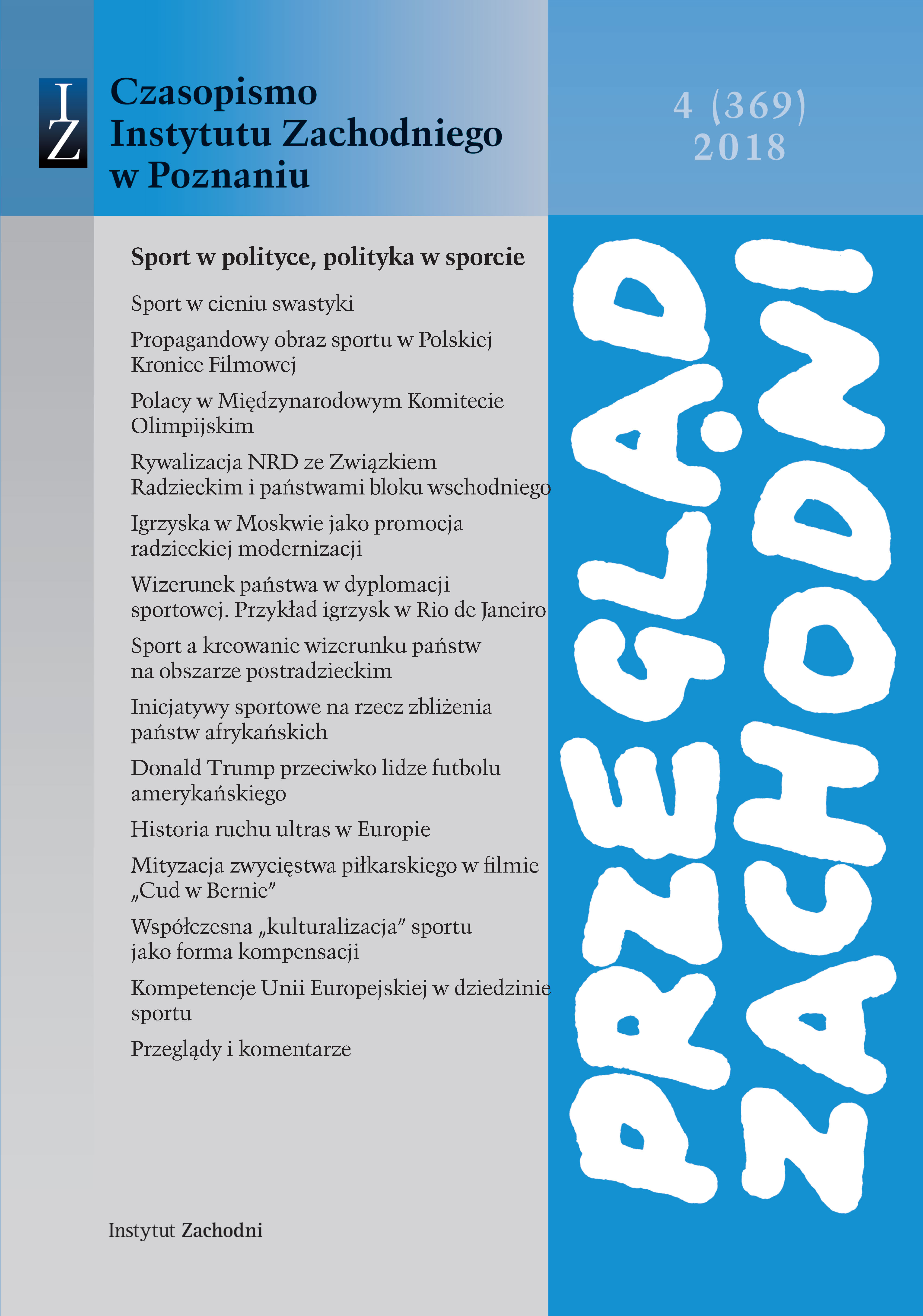Propagandowy obraz polskiego sportu w Polskiej Kronice Filmowej. Okres stalinizmu (1949 -1956)
Propagandist image of Polish sport in the Polish Film Chronicle. The Stalinist period (1949-1956)
Author(s): Tomasz SikorskiSubject(s): Media studies, Post-War period (1950 - 1989), Sports Studies
Published by: Instytut Zachodni im. Zygmunta Wojciechowskiego
Keywords: sport; Polish People’s Republic; the Polish Film Chronicle; propaganda; ideology
Summary/Abstract: The article deals with the propagandist image of Polish sport as presented in the Polish Film Chronicle (PFCh). The scope of the research field is determined by the time frame of the Stalinist period, that is the years from 1949 to 1956. The article consists of two parts. The first one presents institutional reorganisation of sport after the Second World War, the process of party- and government-driven ideological indoctrination through sport, and the place of sport in the propaganda machine (“engineering of souls”). The second part presents an analysis of PFCh’s sport-related materials produced between 1949 and 1956. Attention focuses on the ideological and propagandist aspects of sport and physical education, whereas artistic and aesthetic values of the documentaries are treated marginally. The article’s objective was to analyse the content of documentaries produced by the PFCh, treated as a tool and instrument of propaganda, and creating a falsified or distorted view of social reality, in this case, a broadly understood phenomenon of sport. The leading hypothesis is that sport in the Polish People’s Republic was subjected to a propagandist (ideological) pressure that resulted from subjugating it to the Marxist and Leninist doctrine and ideological and pragmatic objectives of the governing communist Polish United Workers’ Party. The following subsequent hypotheses are derived from considerations on close relations between sport, politics and ideology: 1) using visualisations, editing, camera work, script, directing, and verbal tools (stylistics – the language of commentary), the PFCh constructed a propagandist image of sport; 2) the PFCh promoted a party and government programme of popularising and endorsing sport and physical education; 3) the PFCh created an image, a model of “citizen sportsmen”, politically, ideologically and class-wise informed; 4) the PFCh promoted the thesis of the superiority of sport in people’s democracies (socialist countries) over the sport in western (capitalist) states; 5) within the context of sport, the PFCh endorsed the idea of solidarity and friendship with the USSR and “brotherly” nations. The article uses methods applied both in historical and political science research (or broadly speaking, in social sciences). The historical method (analysis and evaluation of sources) and systems analysis dominate. Comparative research was also applied to capture similarities between the Soviet sport model (the preferred model) and Polish experiences. In a broader perspective the research allowed to establish similarities and differences between social and political phenomena. The dominating research technique was the analysis and evaluation of sources (especially audiovisual ones) to reconstruct the phenomena within the research field and time frames.
Journal: Przegląd Zachodni
- Issue Year: 369/2018
- Issue No: 04
- Page Range: 35-60
- Page Count: 26
- Language: English, Polish

